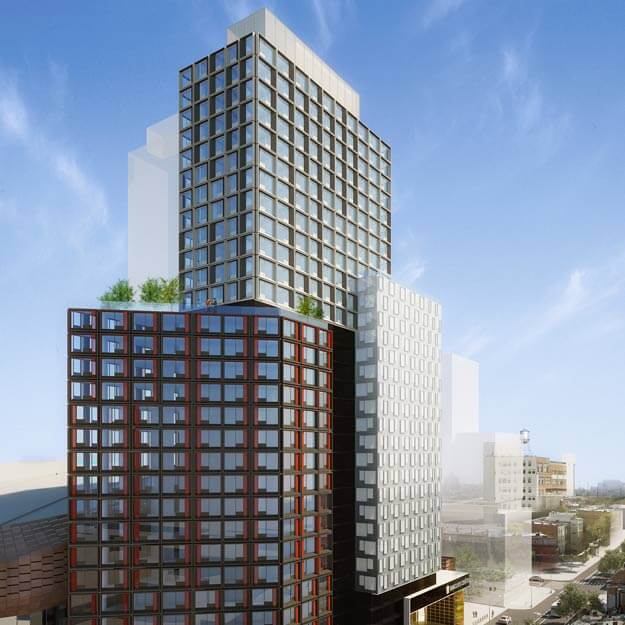While it’s still far from a slam dunk that team owner Bruce Ratner will eventually be able to move the Nets to a new arena in Brooklyn, one legal expert who has more than three decades of experience working on eminent domain cases, believes it’s doubtful that Atlantic Yards opponents did enough in Wednesday’s oral arguments in Albany to prevent Ratner from getting the property he needs for development.
William Ward, who runs the legal blog, New Jersey Eminent Domain Blog, said the justices at the Wednesday hearing before the New York State Court of Appeals asked fair and tough questions to both sides in the case. But working against the petitioners is legal precedent that will likely result in another instance of forward progress for the Atlantic Yards development.
“In this case, the petitioners have a very tough road ahead of them if they’re going to prevent this project from going forward,” said Ward, who has prior experience as a deputy attorney general in New Jersey, litigating cases for the Department of Transportation, and as secretary and general counsel for the New Jersey Sports and Exposition Authority.
During the arguments on Wednesdays, petitioners argued that the scope of “public use” in acquiring land through eminent domain for projects like the Atlantic Yards site, needed to be paired back and limited. However, legal precedent has demonstrated that “public use” has been broadened over time, not narrowed.
Ward said he was unaware of any cases where the scope of “public use” had been narrowed to what the petitioners were requesting in Wednesday’s hearing.
Another roadblock for the petitioners was the timing of their complaint. Essentially, according to New York State’s Eminent Domain Procedure Law, petitioners had to file their complaint within a 30-day limitation contained in the statue. Instead, they unsuccessfully pursued their cased in federal court and relied on a six-month grace period to support their application that the action was timely filed. If the Appeals Court wants to avoid a controversial decision, they could potentially throw the case out without ruling due to this technicality, Ward said.
One aspect of the case that could work in the petitioners’ favor was the idea of how the proposed development area was considered “blighted” by the Empire State Development Corporation. While all sides conceded that the Atlantic Rail Yards are indeed blighted, the justices questioned whether or not the ESDC condemned other properties as blight in an effort to push the whole development forward.
In this, the worst case scenario for Ratner is the court orders the ESDC to do further study on the blighted properties, which would lead to further delays for a groundbreaking. However, even with this possibility, “it remains a long shot” for the petitioners, Ward said.
While there are still other lawsuits floating around that could impede progress on the Nets move to Brooklyn, Ward believed if the Appeals Court finds in the developer’s favor, the petitioners won’t be able to challenge the ruling. Instead, the next round of legal haggling will likely focus on such things as the value of the land and relocation costs for those who have been condemned.















